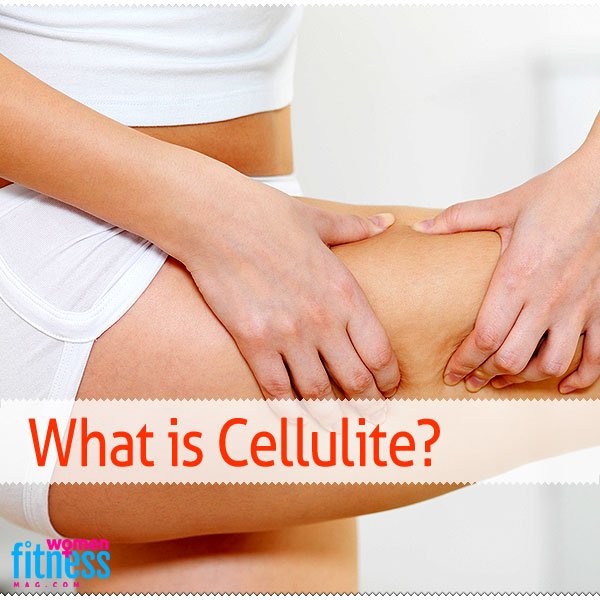What is Cellulite? Cellulite, known medically as gynoid lipodystrophy, is considered a localized metabolic disorder of the subcutaneous layer of skin, the dermis, and its small blood vessels. Over years, these vessels become compressed, resulting in inflammation, poor lymph drainage, proliferation of fibrous tissue, tissue damage, unevenness of the thickness of the skin, and the protrusion (herniation) of fat through layers of the skin. Some researchers have called cellulite a “condition of altered connective tissue” or an “abnormality of the architecture of the skin.” Khan and his colleagues, in a 2010 comprehensive two-part article in the Journal of the American Academy of Dermatology, describe cellulite as “a result of several ultrastructural, inflammatory, histochemical, morphologic, and biochemical changes.” The primary areas involved—the thighs, abdomen, and buttocks—acquire the uneven, dimpled, and textured skin of an orange (peau d’orange) or the lumpiness of cottage cheese. Though considered by some an abnormality, cellulite is extraordinarily common and found, to some degree after puberty, in from 85 to 98% of women (though more often in Caucasian than Asian or Black women.) Researchers emphasize that it is an aesthetic condition, though highly embarrassing to most women, and not associated with mortality or morbidity.
Cellulite was first described in the 1920s and thought to be related to a water imbalance. Over 90 years later, we still don’t know too much more about its pathophysiology or even exactly why it is seen primarily in women. There are many factors that seem to predispose women to develop cellulite, including genetic factors, hormonal factors (e.g. particularly estrogen), and lifestyle choices (e.g. lack of exercise, pregnancy, high carbohydrate diet with increased insulin levels, increased weight, excessive salt intake, protracted intervals of sitting or standing that interfere with blood flow, etc.) Though more prevalent and more extensive in obese women, cellulite is also seen in women of normal weight (i.e., normal body mass index, BMI) as well. Weight gain, itself, can make the appearance of cellulite worse. Weight loss and particularly significant weight loss, can make its appearance better.
Khan and his colleagues emphasize that all the cellulite treatments that are currently available offer only “mild” and at best, only temporary improvements in the appearance of cellulite. cellulite treatment modalities include various topical creams (including ones that increase collagen formation such as the peroxisome proliferator-activated receptors (PPARs), cellulite massage, radiofrequency waves (using a combination of electrical and heat stimulation that can be painful), ultrasound, and even lasers. Intense pulsed light (i.e., light in the visible spectrum) that uses thermal energy, in combination with retinyl-based cream, has also been tried, with some success, to increase collagen production and decrease the irregular peau d’orange skin of cellulite. Liposuction, though, in general, is not recommended as a cellulite treatment because it has to be performed too close to the skin’s surface and may result in a poor aesthetic result and even more likely, lead to complications. Other invasive techniques that require surgically cutting into the skin or injecting various compounds (e.g. caffeine, theophylline, hormones, vitamins, herbal substances) into the subcutaneous layers of skin are also not recommended as they may lead to localized edema, bleeding, tender nodules, infection, allergic reactions, and even irregularities in the external look of the skin.
It is probable that cellulite treatment will eventually entail the combination of different modalities. For example, ultrasound, which can lead to damage of fat cells, by itself, has not proved efficacious in treating cellulite but may have a role eventually when combined with other therapies. Likewise, there may be a role for the use of carboxy therapy in which carbon dioxide is injected into the skin’s subcutaneous layers, or even the selective use of cryolysis, i.e., the destruction of cellulite by exposure to cold, although all the ramifications of this technique on adipose tissue are not known. Another new theoretical approach involves use of the phosphodiesterase inhibitors that increase circulation by vasodilation. The most familiar one, of course, is sildenafil, more commonly known as Viagra. Some researchers suggest that a topical form of sildenafil may eventually be developed and have a therapeutic role in treating cellulite.
Despite its ubiquitous presence in most women, cellulite remains an enigma for physicians, not only in terms of its pathophysiology, but also in terms of effective cellulite treatment.
What is Cellulite?
What is Cellulite, la cellulite, anti cellulite, cellulite treatment, cellulite cream, Cellulite thighs, cellulite massage, nivea cellulite, cellulite legs, gegen cellulite, cellulite treatment, cellulite removal, cellulite reduction, get rid of cellulite, cellulite exercises, how to get rid of cellulite, stretch mark removal, mesotherapy, cellulitis, What is Cellulite




